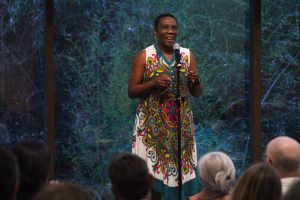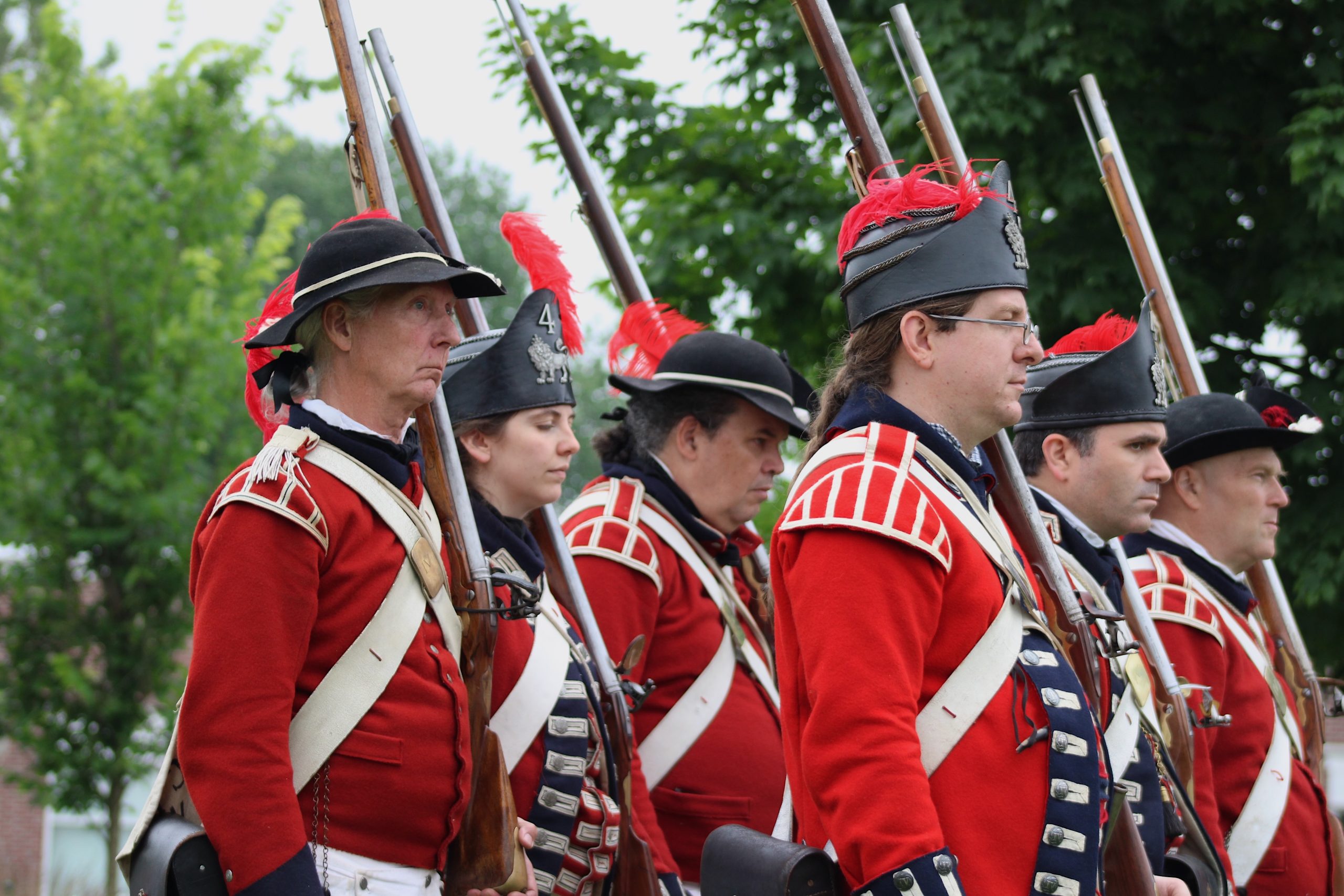
Turning out in Defense of the Crown
June 24, 2024
• A troop of Revolutionary War reenactors camped out in Needham Saturday to teach the public about British soldiers and their history.
Two-hundred fifty years ago, Red Coats in Needham Center would likely be met not with open arms but rather firearms. On Saturday, however, British loyalists — or just curious Needhamites — flocked to the Town Common to welcome a regiment of British troops from the Revolutionary War.
Thanks to a grant from the Needham Council for Arts and Culture, a cohort of New England war reenactors flashed their replica weaponry, drilled with local children, marched in formation and answered questions about the daily life of a British soldier before and after the first shots of the Revolution.
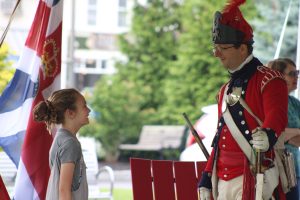
The group represented the King’s Own 4th Regiment, a collection of light infantry soldiers who made the case for British rule. As a progressive regiment, they strive for historical accuracy.
For Gregory Soloviev, who joined the company in 2014, his sympathies for England began in elementary school — in the reenactments he attended, the British were almost always outnumbered by the Americans.
“No one wants to be the bad guy,” he said, but he enjoys it.
“There’s nothing like marching down a street and getting booed by children and grimacing and snarling back at them,” Soloviev said. “That’s fun.”
Tal Dibner also finds it “fun to be a bad guy.” The Needham resident, who brought the regiment to town, joined after working with reenactors as models for his historically inspired paintings.
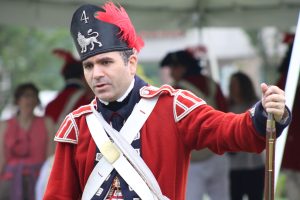
In his heavy wool uniform — luckily on a cooler day — Dibner said reenacting allows him to learn about the history and understand the mindset of those on the opposing side of the battle. Town events help to dispel misconceptions around the British Army and interact with the public, he said.
“I think a lot of people show up at a major reenactment, they see the soldiers marching around, they see the smoke and fire, and it’s exciting and it is a wonderful piece of living history,” Dibner said, “but I think that when you have a chance to speak one-on-one with people, you have a much better chance to really learn something.”
Dibner portrayed a military private but taught a group of children how to shoot in formation, using wooden toy guns as props.

Soloviev’s young daughter Elizabeth dressed in period clothing and wielded a fake weapon, “shooting” people for tax evasion. Soloviev said her interpretation is less than accurate.
“I don’t think the British Army ever shot anyone for not paying taxes. Fined people, sure, but we were not war criminals for the most part,” Soloviev said. “Don’t listen to everything 8-year-olds say.”
Though the 4th Foot’s visit to Needham was not based on a historical event, Dibner said British patrols would visit settlements in Great Boston to keep an eye on things. The regiment was, however, at Concord Bridge during the first rounds of firing. Lexington and Concord, seen as an American victory, launched the American Revolution.
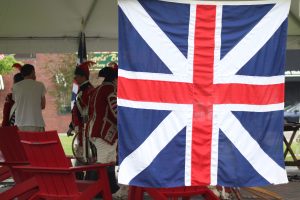
After British troops killed eight people in Lexington — somewhat unprompted — they burned supplies in Concord, but American settlers believed the army was setting fire to the town, which started the battle, Dibner explained. British troops retreated to Boston, and the 4th Foot was later sent to the Caribbean during the second half of the war, where soldiers succumbed to tropical diseases.
In the context of other history villains, the British, by comparison, weren’t so bad, Dibner said. The British Army acted as a “force for order” and “represented the way things were,” he said, and “demonizing the British” does them a disservice.
For much of the Revolution, a British victory seemed inevitable, but Lexington and Concord showcased the strong American revolutionary sentiment.
“Every time we met George Washington, we clobbered him,” Dibner said.
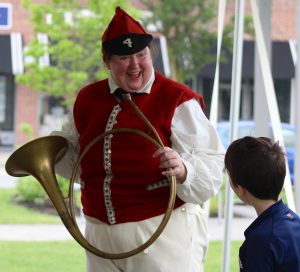
Apart from visiting schools for lessons, the troop also holds a memorial service for British Revolutionary soldiers.
Andrew Bodkin wore the musician’s coat and carried a bugle as the regiment’s horn player. Prior to the mid-1800s, the horn would be used for military movement commands, specifically for light infantry companies, Bodkin said.
During heavy fire, the horn — or drum, among other units — could be heard, Bodkin said.
“They had different signals. Different sounds meant different things,” Bodkin said. “It was almost like a secret code for the enemy didn’t necessarily know what you were going to do before you did it, but all of your men were on the same page before you moved.”
The musical “Hamilton” fueled Lily and Gabby Rubin’s love of Revolutionary history, pushing the Needham students to read books about the time period. They’ve also toured historical sites in Boston, including the site of the Boston Massacre.
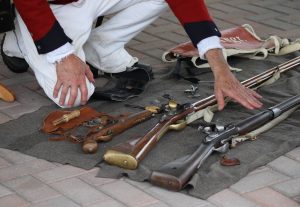
On the Town Common, the girls learned about the types of guns used during the war and how soldiers loaded them, shot and fought. Gabby Rubin, 13, said she’s fascinated by all periods of history, but the course of the Revolutionary War is particularly interesting to her.
“The fact that we were losing and then we somehow won was really cool,” Gabby Rubin said, “and also how the fighting style changed in the war.”
When asked which side they’d fight alongside, Gabby said she sees faults to both, while Lily, 10, said she would probably choose to take up arms with the colonies.
“It was bad taxes and the British got to do better things than the Americans,” Lily Rubin said, “so I wouldn’t want to be on that side, so I’d choose Americans.”
Though he remains loyal to the Americans — and believes he would have fought for independence some 250 years ago — Dibner did have a closing message: “God save the king.”

